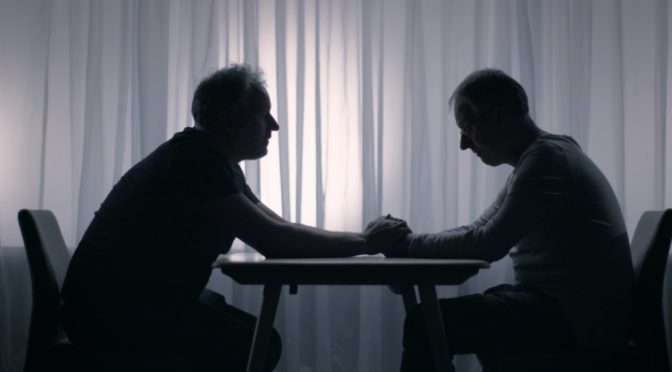Screened at the Telluride, Hamptons, and BFI London film festivals, TELL ME WHO I AM hews closely to Netflix’s successful format for documentaries. The film tells a powerful and intimate story about trauma and trust but, in its conclusion, creates an uncomfortable sense of invasiveness that raises issues of our trust in the filmmakers.
Alex Lewis woke up with amnesia after a motorcycle accident. All his memories of childhood were erased: he forgot his friends, his girlfriend, even his mother and father. The only memory he retained was knowledge of his twin brother, Marcus, and a sense that his twin could be trusted to help reshape his memories.
TELL ME WHO I AM follows an increasingly popular format for documentaries as seen in Netflix series like Making a Murderer and The Staircase and in non-Netflix films like THREE IDENTICAL STRANGERS. These documentaries are narrated entirely through interviews with the documentary subject; the interview audio is accompanied by interview footage, archive photos and video, and brief dramatised scenes with actors; they follow a similar structure where gradual dramatic revelations build to unexpected and extraordinary stories.
TELL ME WHO I AM is most effective when it is hewing to this format. The first two acts focus on the perspectives of Alex and Marcus respectively; the power of the brothers’ story and their engaging personalities drive the interviews. The use of special effects on archive footage to flicker subjects in out of old photos and videos is an engaging effect and a cool representation of the fading of memory.
However, the third act moves away from this format and pushes the viewer uncomfortably close to a personal confrontation in a way that feels invasive. In the third act, Alex and Marcus come together to talk about what happened to them. Their discussion takes place on a sound stage dressed in black and white and surrounded by cameras. This staging immediately removes the story from its real-life context. It feels fake and it makes the emotional conclusion seem forced.
At one point, Alex is given a laptop and headphones to watch footage from his brother’s interview. The scene evokes Werner Herzog listening to the recording of Timothy Treadwell’s death in GRIZZLY MAN. But where Herzog inserted silence (albeit a performative form of silence) into this intimate moment to establish the limits of the documentarian, TELL ME WHO I AM shows us the footage in a way that feels intrusive into an intensely personal moment in the brothers’ relationship. The absence of the filmmaker (apart from one out-of-focus shot of a figure delivering the laptop to Alex) and the black-and-white set makes the scene feel weirdly clinical. It feels deeply uncomfortable to watch this important and traumatic moment in Alex’s life take place on this antiseptic stage in front of multiple cameras.
In its first two acts, TELL ME WHO I AM is a powerful story of trust between Alex and Marcus that says something about the importance of trust after trauma. But the third act pulls attention away from that message and draws our attention to the audience’s trust in the filmmakers. The documentary’s subject matter necessitates a certain sense of discomfort in its audience but not the sense of invasiveness that mars the story by pulling it out of the context of real life.

